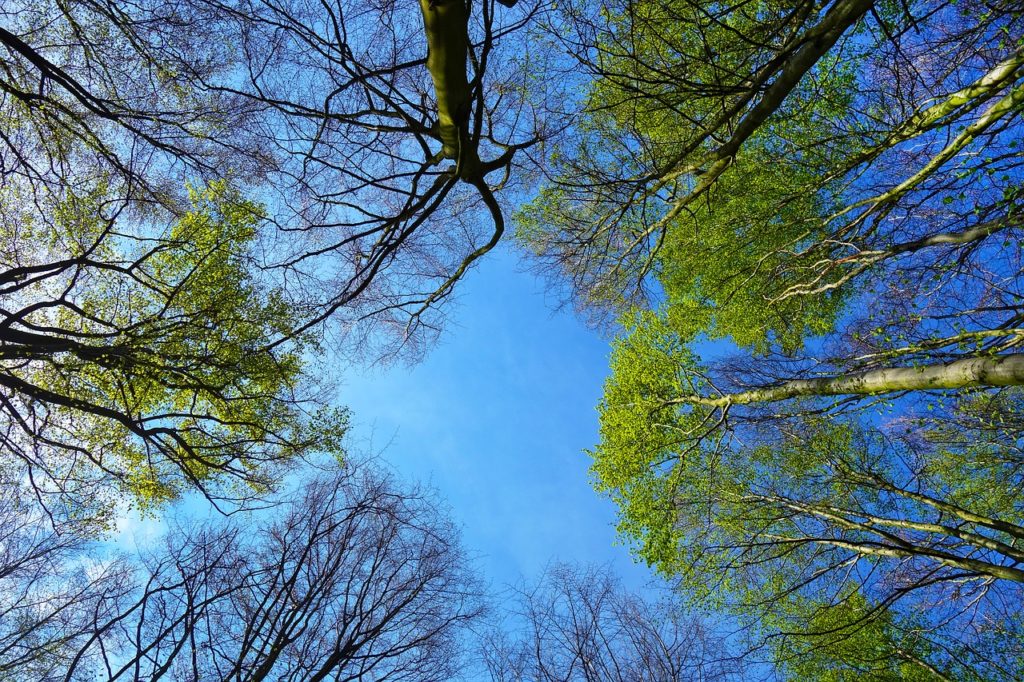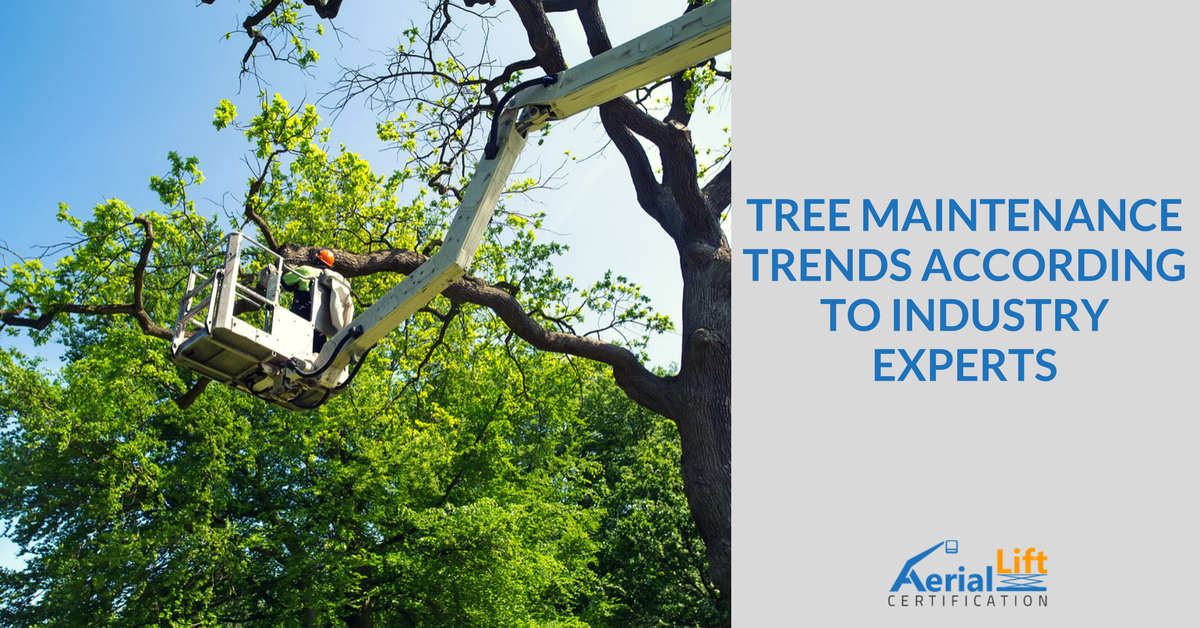Top Tree Maintenance Trends for 2018 According to Industry Experts
Arborist work and tree maintenance has been around for centuries and is still an important part of living, building and doing business in the world today. Advancements have certainly changed the way tree care is done, with the most prominent improvement being the use of aerial lifts. Additionally, new tree maintenance technologies and tools are being created and introduced to the public that not only help aerial lift operators but also change the way professional tree care is done and how it is offered to customers.
Learn about some of the top trends emerging in tree maintenance for 2018 and how tree care specialists can improve their work and provide a better experience for their customers and the trees.
Top Advancements in Tree Maintenance Technologies and Products
-
More Precise Tree Care Treatments
Tree maintenance often involves tree treatments to prevent diseases and other factors that can damage trees. The often-used method of foliar spraying, spraying product up into the air, is quickly becoming outdated and inefficient thanks to new treatment technologies.
Bryan Raehl, general manager at Agronomic Lawn Management, a tree care company in Virginia, says many tree care specialists are turning to injection, soil drenching, and basal applications for more efficient and eco-friendly treatments. 

“Injection involves inserting liquid fungicides or insecticides directly into the roots or the trunk of trees. Your local tree care experts will have the tools and the knowledge to inject the right concentration of chemicals in the right part of the tree, at the right point in season.” Injection is usually more effective at reducing adelgids and ash borers, two destructive tree enemies.
“Soil drenching involves adding concentrated amounts of insecticides directly to the base of the plants for deeper penetration.”
And for the third treatment method, “basal applications do involve spraying, but instead of spraying the entire tree, your technician will apply chemical treatments to the base of your tree trunk. Those insecticides and fungicides are absorbed through the bark and circulate through the vascular system of your tree.”
In terms of added benefits, Raehl says that,“these newer treatment options make it easier for experts to apply treatment on windy days and prevent overspray. These more targeted treatments are more environmentally friendly and also more effective, meaning that treatment only has to be applied once a year or even every other year, instead of multiple times throughout the season.”
-
Planting with Coco Coir for Enhanced Growth
Many homeowners and tree professionals alike struggle to improve the look and growth of trees that weren’t planted in ideal growing locations. Many growth enhancers on the market, like fertilizers and insulating mulch, just don’t do the trick, but a newer product called Coco Coir may provide a better solution.
“For trees on properties that are not in the most ideal growing spot, coconut coir is an ideal grow medium because it holds water exceptionally well while still promoting good drainage and aeration,” says Maria Gath, representative for Cosmic Connections, a Coco Coir product company based in Ashland, Oregon.
So what exactly is Coco Coir? Coco Coir is a product made of everything between the shell and outer coating of a coconut seed. Brown and white fibers make up coconut coir, which come from both mature, ripe coconuts and pre-ripe coconuts for strength and flexibility.
Coco coir comes in the form of loose fiber bailes and pre-made pots, which are organic and biodegradable. The pots “add texture to soil as they degrade. (Tree) roots will grow through the pot walls, encouraging a strong root system. Coco Coir pots absorb water efficiently and help to moderate moisture and increase microbial activity. (They’re also) environmentally sustainable and completely natural.”
-
More Efficient Tree Care with Newer Technology
While the primary tools for tree maintenance have remained the same, like trimmers and safety ropes, the efficiency of tree care has changed thanks to technology and increased customer involvement.


Professional landscaper Theodore Beasley, from Landscaping London, says that technology is becoming more and more present in the work of tree surgeons. “A popular trend is to send photos of your tree when making a booking. That’s done so the surgeons know what kind of tree they’re dealing with in terms of size and condition. They can also plan ahead and choose the right tools for the job.”
Technology can also benefit the typically dangerous job of tree felling. “When it comes to tree felling, preparation is key. The surgeons need to choose the right felling direction and whether there are any obstacles,” says Beasley.
Gardening expert and manager of Fantastic Gardeners Melbourne, Jane Clarke, has also seen the rise of technology in the tree care industry. “Nowadays, people can get a lot of information from the internet. For example, if you’re concerned about an invasive species you can research (your) trees and how to treat them. There are a lot of articles, which offer ways of dealing with your garden problems on your own.”
Even with advancing technology and 24/7 access to the world wide web, Clarke still encourages tree care amateurs to reach out to the professionals. “If you don’t have any experience, you don’t have the time and you don’t have the budget needed for the equipment, it’s best to look for professional help.”
The Biggest Changes in Tree Care Demands
The tree care industry is changing not just in the available technology, tools and products, but also in how and why customers want tree care.
Pol Bishop, gardening and landscaping expert from Fantastic Gardeners, says the biggest change he’s seen is the reasons why customers want tree care and for what purposes.
“When it comes to trees as part of the landscape, many people think they are a part of the whole picture and tend to skip on their features on the functions they can play in the whole landscape design. However, in recent years, there’s been a change in that.”
According to Bishop, the biggest changes in customer wants are:
- “To add privacy – People have realized that trees can act as a privacy fencing. More and more customers are looking for an environmentally friendly way to add privacy to their properties and trees and screening plants such as bamboo and shrubs are the perfect solution to that.
- Windbreak – Homeowners in areas with strong winds find it hard to keep up with constant fence repairs due to wind damages, so some have resorted to using trees as natural windbreaks. You can also see trees acting as windbreaks along highways and smaller roads.
- Visual appeal – We receive inquires from customers about trees that offer a pretty sight in the different seasons. They want to admire the pretty blooms in spring and the red and yellow foliage in autumn.
- Native over introduced – There’s also a rise in the requests to plant local tree species. People are getting more concerned about the environment and want to do something to help with deforestation and helping native animal species.
- Change in maintenance routine – There’s a rise in people who are genuinely concerned about the trees on their properties. Our customers are educating themselves on various tree related topics such as tree problems, when’s the most appropriate time to prune a tree and why it’s important to do it. There’s also a drop in the people who decide to prune their trees and shrubs themselves and instead they directly seek the help of professionals.
- Going green – Another trend is that customers ask if the products we use are environmentally-friendly and if they contain any harmful chemicals. In the past customers didn’t care about such things and companies relied on strong pesticides, but the go green movement has caused this to change. Nowadays, more companies pick and use special products that are safe and contain as little chemicals as possible.”
Aerial Lift Improvements and Proper Tree Care Worker Training
Aerials lifts like cherry pickers and bucket trucks are some of the most important tools used for tree care and maintenance. Improvements in the lift machines have made tree care work more efficient and higher quality, while reducing the number of injuries in this traditionally dangerous sector of landscaping.
According to Tom Wilkerson, CEO of AerialliftCertification.com, proper operator training also has something to do with the improvement in tree care. “Tree care workers who are properly trained and certified are equipped not only with the best tools for the job, but with the knowledge and skills needed to care for trees properly and protect their safety on the job. When tree maintenance specialists aren’t trained, they aren’t able to recognize and avoid the hazards that often lead to injuries, fatalities, and damages to the environment.”
To learn more about top-quality, OSHA-compliant online aerial lift certification training, click here.
